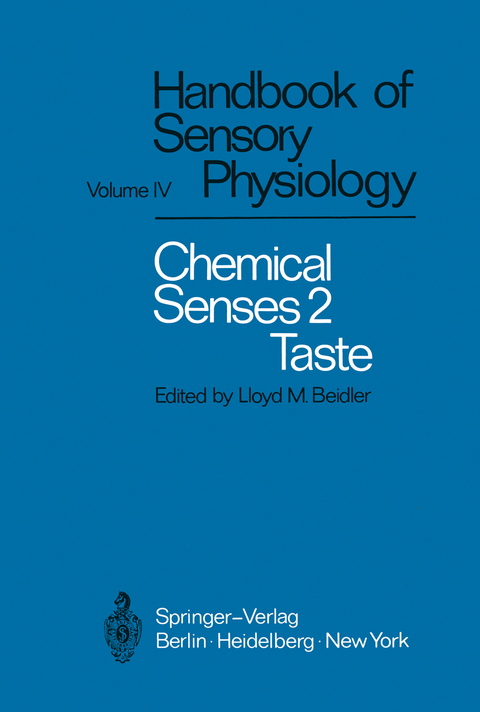
Taste
Seiten
2011
|
1. Softcover reprint of the original 1st ed. 1971
Springer Berlin (Verlag)
978-3-642-65247-9 (ISBN)
Springer Berlin (Verlag)
978-3-642-65247-9 (ISBN)
Taste receptors monitor the quality of all the food ingested. They are intimately involved in both food acceptance and rejection. The sensation of taste is also important in the regulation of many specific chemicals necessary for maintenance of the body. For example, disturbance of the adrenal glands results in a change in the intake of salt which is necessary for regulation of the sodium balance. Curt Richter's early studies on specific hungers and preference thresholds initiated a large number of studies in this field. The relationship between taste and food intake is now well recognized by physiologists, psychologists and nutritionists. Our current concepts of the neural coding of taste quality and intensity are largely based upon the classical paper by PFAFFMANN in 1941. Many subsequent single nerve fiber studies have added to our understanding. In recent years Zotterman and Diamant have successfully recorded from the human taste nerves as they pass through the middle ear. This allowed them to study the relationships between the response of taste receptors and the resultant taste sensation. No similar feat has yet been accomplished with the visual and auditory systems.
1 Tongue Topography.- 2 Ultrastructure of Taste Receptors.- 3 Development of the Taste Bud.- 4 Degeneration and Regeneration of Taste Buds.- 5 Taste Psychophysics.- 6 The Recording of the Electrical Response from Human Taste Nerves.- 7 Neural Coding in Taste as Seen from Recordings from Peripheral Receptors and Nerves.- 8 Central Projections of the Gustatory System.- 9 Genetics of Taste.- 10 Electrical Taste.- 11 Taste Receptor Stimulation with Salts and Acids.- 12 Chemical Structure of Compounds and Their Sweet and Bitter Taste.- 13 Comparative Study of Taste.- 14 The Sense of Taste in Fishes.- 15 Role of Taste in Specific Hungers.- 16 Taste Modifiers.- Author Index.
| Erscheint lt. Verlag | 15.11.2011 |
|---|---|
| Reihe/Serie | Chemical Senses. | Handbook of Sensory Physiology |
| Zusatzinfo | VIII, 410 p. |
| Verlagsort | Berlin |
| Sprache | englisch |
| Maße | 170 x 244 mm |
| Gewicht | 780 g |
| Themenwelt | Medizin / Pharmazie ► Allgemeines / Lexika |
| Studium ► 1. Studienabschnitt (Vorklinik) ► Physiologie | |
| Naturwissenschaften ► Biologie | |
| Schlagworte | Ear • Geschmacksorgan • Nutrition • Physics • quality • Regulation • relationships |
| ISBN-10 | 3-642-65247-6 / 3642652476 |
| ISBN-13 | 978-3-642-65247-9 / 9783642652479 |
| Zustand | Neuware |
| Haben Sie eine Frage zum Produkt? |
Mehr entdecken
aus dem Bereich
aus dem Bereich


